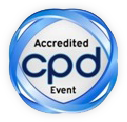
Kelvin GM Brockbank
Clemson University, USA
Title: Title: Ice-free banking by vitrification of tissues
Biography
Biography: Kelvin GM Brockbank
Abstract
End-stage organ disease accounts for over 700,000 US deaths annually. Ice-free vitrification is an alternative cryopreservation strategy to conventional freezing that holds great promise as a means of banking tissues and organs. Vitrification is the amorphous solidification of a supercooled liquid, achievable by adjusting the cryoprotectant concentration and cooling rate to minimize ice crystal nucleation and growth, in a glassy state. Without ice crystal formation, the biospecimens’ extracellular matrix and cell viability is better preserved. The decision to utilize an ice-free versus a freezing method for different types of biospecimens depends on which method is easiest for the product. Generally, cells and tissues can be preserved using ice-free vitrification but isolated cells are usually easier to preserve using freezing methods. Ice-free vitrification has major advantages for preservation of tissues such as ovaries, heart valves, articular cartilage, blood vessels and more recently tissue engineered arteries, skin and cornea provided that the total volume of tissue and solution is no more than 5 mL. At larger volumes, it is difficult to vitrify without ice forming because cooling and warming rates become limiting factors, cryoprotectant toxicity also becomes an issue as the tissue sample size increases. These hurdles need to be overcome if the promise of dramatically improving organ and tissue banking is to become a reality alleviating the growing economic burden of organ impairment. Progress towards these objectives using supplements to control excessive ice formation, new cooling and warming techniques and analytical methods will be reviewed.

